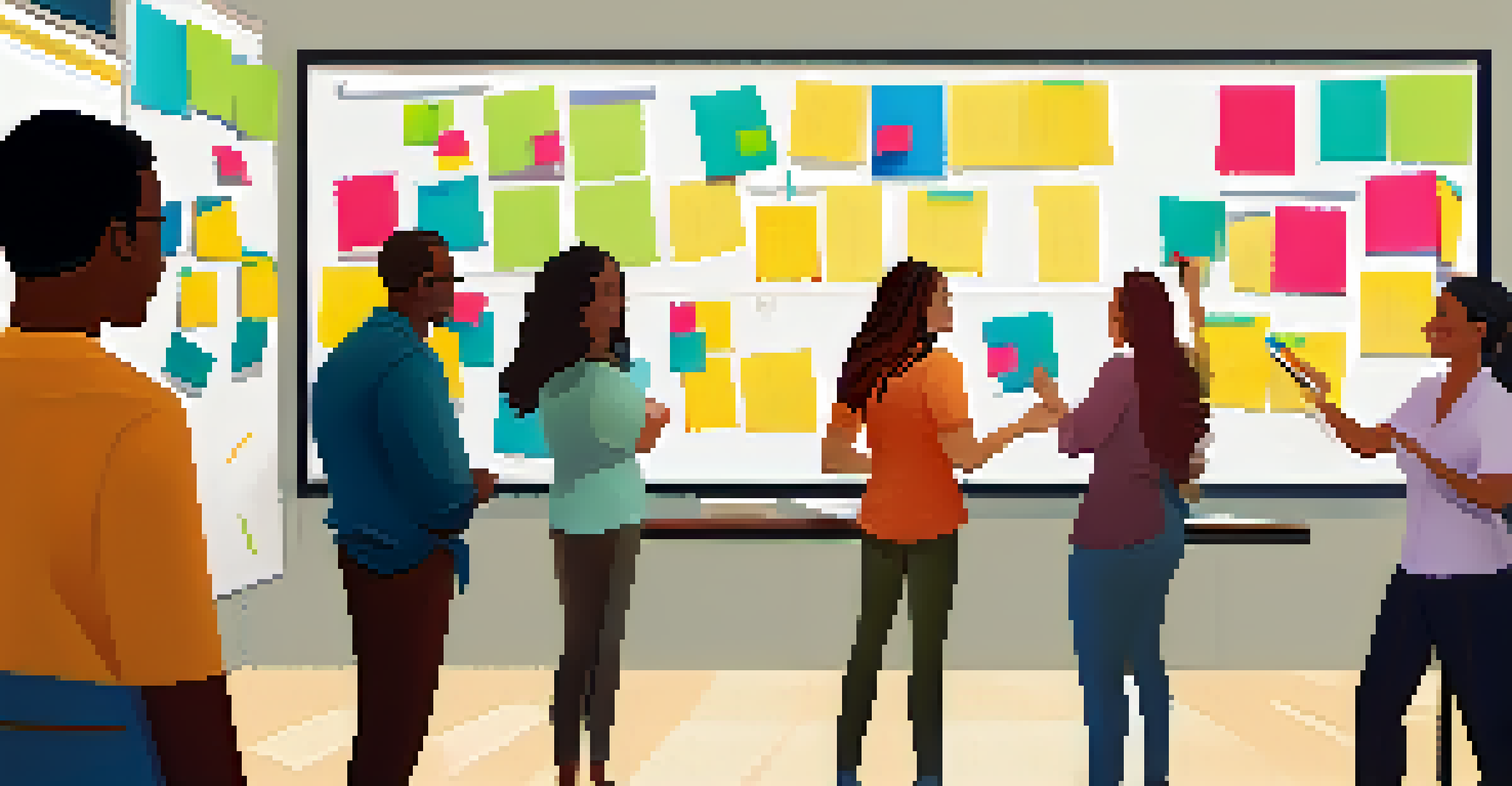Engaging in Collaborative Lesson Planning with Educators

Understanding the Importance of Collaboration in Education
Collaboration is a key ingredient in the recipe for effective education. When educators come together to plan lessons, they bring diverse perspectives and expertise that can enhance the learning experience. This collective effort not only fosters a sense of community but also encourages innovative teaching strategies that might not emerge in isolation.
Alone we can do so little; together we can do so much.
Think of collaborative lesson planning like a potluck dinner; everyone brings their unique dish, creating a rich and varied feast. This allows educators to share resources, insights, and best practices, ultimately benefiting their students. When teachers collaborate, they can refine their approaches and learn from one another, leading to better educational outcomes.
Moreover, collaboration can help reduce the feeling of isolation that some educators experience. By working together, teachers can provide each other with support, encouragement, and constructive feedback, creating a more fulfilling and less daunting teaching environment.
Setting the Stage for Successful Collaboration
Before diving into lesson planning, it’s essential to create an environment conducive to collaboration. This means establishing clear goals and expectations among educators. A well-structured meeting can set the tone, ensuring everyone understands their role and what they aim to achieve together.

Think about the importance of a welcoming atmosphere, much like a cozy coffee shop where friends gather to brainstorm ideas. Encouraging open communication and fostering trust can help educators feel more comfortable sharing their thoughts and suggestions. This kind of environment promotes active participation and creativity.
Collaboration Enhances Education
When educators work together, they bring diverse perspectives that enrich the learning experience.
Additionally, using tools like shared digital documents or project management apps can streamline the planning process. By having a centralized platform, teachers can easily access, edit, and discuss lesson plans, making collaboration more efficient and organized.
Identifying Learning Objectives Together
A crucial part of collaborative lesson planning is identifying clear learning objectives. By discussing and defining what they want students to achieve, educators can align their strategies and ensure everyone is on the same page. This collective goal-setting helps maintain focus and direction throughout the planning process.
Collaboration allows us to know more than we are capable of knowing by ourselves.
Imagine setting out on a road trip without a map; it’s easy to get lost along the way. Similarly, without defined objectives, lesson planning can become unfocused and chaotic. Collaboratively establishing these goals allows teachers to plan lessons that are relevant and meaningful to their students.
Moreover, aligning objectives fosters a sense of accountability among educators. When everyone agrees on the desired outcomes, it creates a shared responsibility to help students succeed, reinforcing the importance of teamwork in achieving educational goals.
Sharing Resources and Best Practices
One of the most rewarding aspects of collaborative lesson planning is the opportunity to share resources and best practices. Educators can bring in textbooks, online tools, and teaching strategies that they’ve found effective, enriching the collective knowledge base. This exchange not only saves time but also opens doors to new ideas.
Think of it like a treasure chest where each teacher contributes their unique gems. By pooling their resources, educators can create a more diverse and engaging curriculum that caters to various learning styles. This collaborative approach ensures that students receive a well-rounded education.
Setting Goals Promotes Focus
Defining clear learning objectives collaboratively helps teachers align their strategies and maintain direction.
Additionally, sharing best practices encourages continuous improvement. When teachers discuss what works and what doesn’t, they can learn from each other’s experiences, making adjustments that enhance their teaching methods and positively impact student learning.
Incorporating Student Feedback into Planning
Engaging students in the lesson planning process can be a game changer. By seeking their feedback, educators can gain valuable insights into what works and what doesn’t from the learner's perspective. This collaboration not only empowers students but also ensures that lessons are relevant and engaging.
Think of students as the ultimate focus group; their input can help refine lesson plans and enhance the overall learning experience. When educators listen to their students, they can tailor lessons to better meet their needs and interests, resulting in more effective teaching.
Furthermore, incorporating student feedback fosters a sense of ownership in the learning process. When students see their ideas reflected in lessons, they are more likely to be engaged and motivated, creating a dynamic classroom environment.
Evaluating and Reflecting on Collaborative Efforts
After implementing collaboratively planned lessons, it’s important to evaluate their effectiveness. This reflection process allows educators to assess what worked well and what could be improved for future lessons. By discussing these outcomes together, teachers can learn and grow as a team.
Imagine a sports team reviewing game footage to analyze performance; this practice is similarly valuable in education. Engaging in reflection encourages honest discussions about successes and challenges. It opens up opportunities for constructive criticism and continuous improvement.
Student Feedback Drives Engagement
Incorporating student input in lesson planning fosters ownership and results in more relevant and engaging lessons.
Moreover, sharing reflections can strengthen the bonds between educators. This ongoing dialogue fosters a culture of support and growth, ensuring that collaboration remains a vital part of their teaching practice.
Building a Culture of Collaboration in Schools
For collaborative lesson planning to thrive, it’s essential to foster a culture of collaboration within schools. Leadership plays a crucial role in setting the tone, encouraging teamwork, and providing time for teachers to meet and collaborate. When collaboration is valued, it becomes a natural part of the school environment.
Think of it as planting a garden; with the right conditions, collaboration can flourish. Schools that prioritize collaboration often see improved teacher morale and student outcomes. Encouraging collaboration through professional development workshops or team-building activities can nurture this environment.

Additionally, celebrating collaborative successes can reinforce its importance. Recognizing the efforts of educators who work together not only motivates them but also inspires others to embrace collaborative practices.